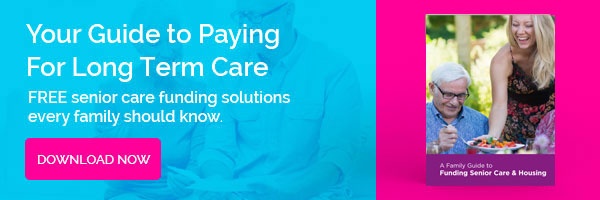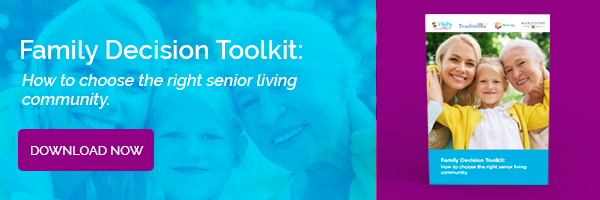If you’re a wartime veteran or surviving spouse, you may be familiar with the Aid and Attendance benefit. However, while many know the benefit helps to pay for higher levels of care, you may not realize that you may be eligible throughout your entire senior living journey. Here’s what you should know about Veterans Aid and Attendance and senior living.
For more information on preparing financially for retirement, check out our Family Guide to Funding Senior Care & Housing!

The ABCs of Aid and Attendance
Per the U.S. Department of Veterans Affairs (VA), you may be eligible for the Aid and Attendance benefit if you receive a VA pension and meet at least one of these medical requirements:
- You need another person to help you perform daily activities, like bathing, feeding and dressing.
- You have to stay in bed – or spend a large portion of the day in bed – because of illness.
- You are a patient in a nursing home due to the loss of mental or physical abilities related to a disability.
- Your eyesight is limited (even with glasses or contact lenses you have only 5/200 or less in both eyes; or concentric contraction of the visual field to 5 degrees or less).
Depending on your specific medical need, you’ll receive a medical rating for Aid and Attendance which may add money to your basic VA pension.
Veterans Aid and Attendance in Senior Living
In 2018, the VA made a number of changes to the Aid and Attendance benefit including its rules on custodial care expenses. Custodial care is defined as non-medical care that helps individuals with activities of daily living and basic care needs. While typically recommended by a medical professional, the actual providers of custodial care are not necessarily medical professionals themselves.
This paved the way for veterans or their surviving spouse to potentially become eligible for Aid and Attendance throughout their senior living journey – from independent living to assisted living to skilled care – as long as they receive the basic VA pension and continue to meet medical criteria that includes at least one of these requirements:
- Resident needs to live in assisted living or independent living because they were failure to thrive at home.
- Doctor, PA, NP or CNS says they are unsafe to live at home alone due to their ailment and need regular supervision.
- Resident needs to live in assisted living or independent living and arrange for assistance with bathing and dressing after shower.
- Doctor, PA, NP or CNS says they need assisted living or independent living and assistance with two activities or daily living.
The Impact
These changes open a variety of doors as you may feel it’s time to move to senior living, but you may not yet need the support assisted living or skilled care provides (and the higher cost that comes with it). As such, Veterans Aid and Attendance can help you offset the cost of independent living initially, giving your more buying power to choose the community that fits you best. Then, as your health evolves you can transition to assisted living or skilled care – often all are located on the same campus – with Aid and Attendance continuing to help you to stay in the community longer than your budget may have otherwise allowed.
How to Apply
To apply for Veterans Aid and Attendance, send a completed VA form to the Pension Management Center (PMC) that serves your state. Or, apply in person at a VA office near you.
For more information, check out our Family Guide to Funding Senior Care & Housing!



